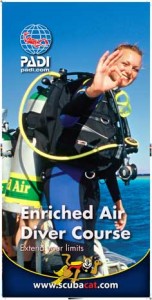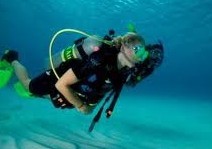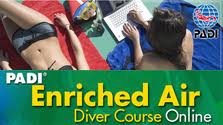Take the Master Scuba Diver Challenge – Enriched Air Diver Specialty (Nitrox)
Scuba Cat Diving has been offering the Nitrox Enriched Air Specialty since ‘s introduction of the course in 1996. Once considered to be dangerous, it now is widely accepted and very accessible. Diving with Nitrox Enriched Air allows us to safely extend our bottom times and after all, time underwater is what it’s all about!
Since its introduction in recreational diving 1985, Nitrox Enriched air has slowly changed from being controversial to widely accepted. It is now our most popular Specialty Program and all our Daytrip boats are equipped with Oxygen Clean Compressors, which enables us to make Enriched Air available to all Nitrox certified customers.
Diving with Nitrox Enriched Air is most beneficial on dives between 18 and 30 meters. The reduced Nitrogen in the breathing gas means less Nitrogen loading and thus longer dive times.
What is Nitrox?
The air we breathe every day typically consists out of 78% Nitrogen, 21% Oxygen and 1% other gasses. In simple terms, Nitrox Enriched Air in Scuba Diving is any breathing max with an oxygen percentage exceeding 21%. The most popular mixes are EANx 32 (with 32% oxygen) and EANx 36. For recreational diving, breathing gases enriched to 40% oxygen are acceptable and up to 60% with Semi Closed Rebreathers.
Most scuba equipment, including regulators, BCD’s and dive computers are compatible with Nitrox Enriched Air up to 40% when they come from the factory, however you should check the manufacturer’s guidelines.
The normal air we use in scuba diving mainly consists out of Nitrogen (approx. 79%) and Oxygen (approx 21%)*. Dive tables and computers are based on calculation of theoretical Nitrogen loading. This loading is expressed in Foot Sea Water (fsw), which is directly related to the Partial Pressure of Nitrogen. So, as most divers already know, the nitrogen loading is based on the depth of the dive and the amount of time we spend underwater. Besides these two elements, the third factor that determines our nitrogen loading is the percentage of Nitrogen in the gas we breathe.
In Scuba Diving, Enriched Air Nitrox is any gas mix with more than 21% oxygen. Our body doesn’t use the extra oxygen in the mix, but we do benefit from the reduced Nitrogen. The reduced nitrogen will reduce the partial pressure of nitrogen when we dive and reduce the nitrogen loading, thus extending our bottom time.
Nitrox Enriched air was first introduced as a recreational breathing gas in 1985, which caused major controversy among Scuba Diving experts. It took another 11 years before it became widely accepted with ‘s support of Nitrox Enriched Air as a recreational breathing gas and its introduction of Educational Material and the Nitrox Enriched Air Speciality course in 1996.
Most dive centres have Nitrox Enriched Air available and some boats have Nitrox available onboard.
Scuba Cat’s MV Scuba Adventure, includes several free Nitrox fills on every trip to allow longer dive times. MV Scuba Fun and MV Scuba Cat both have the facility for Nitrox on board meaning that you can take your Enriched Air Diver Specialty during your diving with us no matter which boat you are on. The course is available as a Elearning course, so you can complete the theory from your own home and enjoy the diving on your vacation.








Scubacat Community